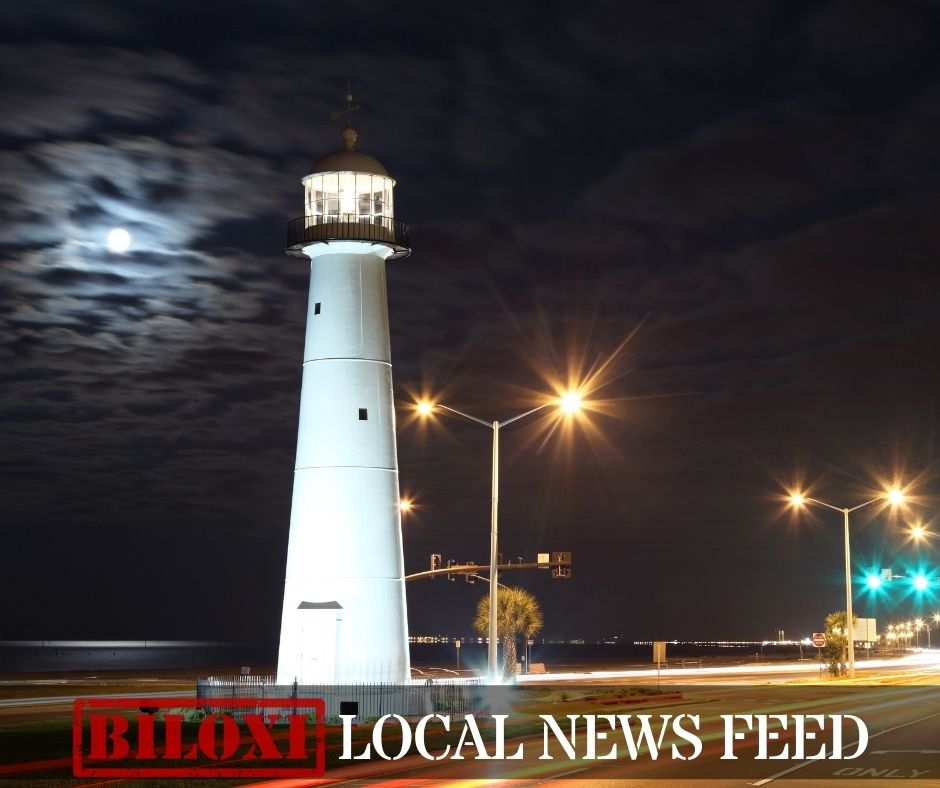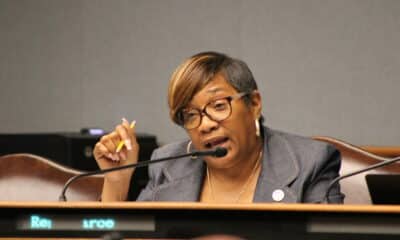Mississippi Today
If you count unspent millions, high denial rate and mysterious outcomes, the TANF scandal persists

Five years after Mississippi officials were exposed for raiding the state’s cash welfare program for the poor, the department in charge of cleaning up the mess does not employ an expert in the program or enough workers to improve its on-the-ground operations, the agency’s top leader said Tuesday.
“We have a sore need for TANF expertise in this agency,” Mississippi Department of Human Services Director Bob Anderson said in a legislative hearing Tuesday, referring to the federal cash assistance program Temporary Assistance for Needy Families. “Like every state agency and every business, we have lost a wealth of institutional knowledge. We don’t have a TANF expert at MDHS. I’ll be the first to admit it. We’re looking for a TANF expert. And we need more PINs (budgeted positions) in our county offices to train people to run the TANF program better.”
The Mississippi Legislative Democratic Caucus held its third hearing about ongoing issues in the federal assistance program Tuesday — a four-hour meeting that, because of the Republican supermajority, is not likely to result in any reforms.
Even Anderson, an appointee of Republican Gov. Tate Reeves, acknowledged necessary changes that the Legislature has failed to enact — though the agency can make some improvements on its own with the governor’s approval. Today, less than 10% of people applying for the assistance make it through the application process each month.
“There are barriers. I’ve talked to you about barriers. I’ve talked to the Legislature about barriers. I’ve advocated for some legislative changes around the program at times,” Anderson said as he displayed a complicated flowchart his agency created to illustrate the eligibility determination process. “Just looking at it, it is unbelievable what is required of an applicant and at every turn, you have ‘case denied’ hanging in the balance every time something doesn’t go as it should for that person who is applying. So it is very difficult.”

Part of the problem is a law the Legislature passed in 2017 called the HOPE Act, which created a maze of bureaucratic red tape that is expensive for the department to administer and arbitrarily kicks people off of its programs. Anderson has said the Legislature should repeal the act but lawmakers have not seriously considered his recommendation.
The amount of the monthly TANF check — a max of $260 a month for a family of three — is also too low to make a meaningful dent in household necessities. In recent years, the state has been spending such a small fraction of its TANF funds that it has accumulated an unused balance of at least $145 million.
“Mississippi has this money stockpiled to misspend because it spends so little on cash assistance,” Sonya Williams Barnes, the Mississippi policy director for the Southern Poverty Law Center, said during the hearing.
Lawmakers and witnesses who testified on Tuesday referred to the TANF program as broken.
“I’m going to disagree with you. Our system is not broken. Our system is designed against the poor. If it was designed for them, we would not have poverty. Poverty is by design, and it profits industry leaders immensely in the state of Mississippi,” Rev. Dr. Jason Coker said during the hearing. “… We create this kind of poverty by the policies we create in this very building and the policies we hang out to dry in this very building.”
Republican leadership has not held a similar hearing to discuss improvements to the TANF program. Several pieces of legislation introduced by Democrats in recent years to significantly increase the amount of monthly assistance, require more TANF spending on child care, and remove burdensome requirements for applicants died without consideration.
In 2021, Anderson secured from the Legislature a $90 increase to the monthly amount, which had been stagnant since 1999, and he said he will be requesting another $60 increase next year. Asked by Rep. Zakiya Summers, D-Jackson, why he didn’t request more, Anderson said, “The governor appointed me. The governor can disappoint me by telling me to go home. So I have to operate within a certain framework.”
Since the state only approves about 125 applications, or 9% of those who apply for assistance each month, most of the money goes elsewhere. Mississippi currently only spends about 5% of its roughly $86.5 million annual TANF award on cash payments to needy families, making it one of just 14 states that spend less than 10% of their grant on direct assistance.
The rest of the state’s TANF spending — anywhere from $32 million (2021) to $107 million (2018) depending on how much of the money Mississippi chooses to use in any given year — is what caused trouble in recent history.
From 2016 to 2020, subgrantees — organizations that receive TANF funds to provide programs like workforce development, teen pregnancy prevention, and parenting initiatives — misspent or stole at least $77 million after receiving political blessing and large up-front cash advances.
Headline-grabbing purchases included a $5 million payment towards the construction of a volleyball stadium at University of Southern Mississippi and $2 million in investments in a pharmaceutical startup called Prevacus that claimed to have found a cure for concussion.
Former NFL quarterback Brett Favre asked welfare officials to fund these projects, and according to text messages first published by Mississippi Today, the athlete communicated about both to former Gov. Phil Bryant, who had authority over the department during the scandal. Favre continues to face a civil lawsuit, but not criminal charges, over these alleged schemes, while Bryant has faced neither.
Seven people have pleaded guilty in the scheme since 2020, including former welfare director John Davis and nonprofit operator Nancy New. None are in prison as they all await sentencing.
On its own without changes to state law, the welfare agency has implemented several reforms designed to reduce favoritism and theft, including reinstating a bidding process for subgrants, removing the director from any decision-making in the awards, switching payments to a reimbursement-only model and requiring more financial and participant data from the organizations.
“I want to tell you it’s a new day in TANF,” said Randy Kelley, director of the Three Rivers Planning and Development District, which currently holds a TANF subgrant. “He (Anderson) demands two things that are high on my list, and I’m proud to tell you this about him. Fiscal accountability. If you don’t have fiscal accountability, you don’t have anything. That’s what happened to the Nancy News and the things y’all are seeing. And he demands program integrity.”
“They look at us so many times, I think I’m in prison,” he joked.
Today, the welfare department awards TANF grants to 21 organizations, including some of the 1960s-era quasi governmental economic development districts such as Three Rivers, which runs a $2.6 million career advancement program.
Three Rivers, located in Northeast Mississippi, began receiving a TANF subgrant in 2020 shortly after officials arrested the former welfare director John Davis and nonprofit operator Nancy New for allegedly stealing $4 million in TANF funds, which marked the beginning of the still unfolding welfare fraud saga.
The day it received the contract, Kelley said the organization’s in-house lawyer walked into his office and shut the door, waving the paperwork in his hand.
“He said, ‘Have you lost your blankety blank mind?’ I said, ‘No, why?’ He said, ‘Do you not keep up with the news?’” Kelley said in Tuesday’s hearing, referring to publicity around the welfare scandal. “I said, ‘I have.’ And he said, ‘Why would you take this money?’ and I said, ‘Our people need it.’”
Three Rivers boasts a 27-county wide training and job placement program, administered through contracts with local community colleges and the state unemployment office, for low-income Mississippians struggling to find work or who are stuck in low-wage positions, under 200% of the poverty line.
According to a budget Mississippi Today retrieved through a public records request, the bulk of Three Rivers’ program funding in the federal fiscal year ending last month went to the Mississippi Department of Employment Services, Itawamba Community College, Northeast Mississippi Community College, Northwest Mississippi Community College and East Mississippi Community College. According to ledgers Mississippi Today retrieved, Three Rivers lists these payments as sub-expenses and does not provide additional documentation of how its partners spend these funds.
It budgeted another $100,000 for supportive services, but little of that had been spent by the end of August, and $218,000 for administration, mostly salaries.
Three Rivers reports serving between 600 and 700 people a year, but the participant data it is required to submit to MDHS includes numerical codes instead of written descriptions for the services it provided, according to the submitted spreadsheets retrieved by Mississippi Today. Additional reports are not made available to the public. MDHS and Three Rivers did not respond to requests for additional information about the data.
Currently, Kelley said his organization is serving 83 TANF-eligible clients and four of them are in truck driving school with the opportunity to increase their income to $80,000.
“This program started with Mr. Anderson. Y’all need to recognize, he’s done away with the volleyball courts,” Kelley said.
Beyond the roughly $4.5 million in direct cash assistance payments and $26 million spending on subgrants annually, Mississippi allocates $29 million in TANF to the Mississippi Department of Child Protection Services and transfers $25 million to supplement the Child Care Payment Program that provides vouchers to working parents.
Sen. David Blount, D-Jackson, acknowledged that TANF is supporting some good programs in Mississippi, but that more of it should be used on direct cash assistance — the more efficient option.
“The TANF money is the only money in the budget that we can put into the hands of poor people. The state budget is $31 billion dollars. And this is the only money that can directly help poor people,” Blount said. “There’s a massive bureaucracy, and RFPs, and ten-step process, and fiscal management, and all that bureaucratic crap, where you could just send people checks, and they can spend it, and pay rent, and buy food with it, and that, to me, is more efficient.”
U.S. Congress created TANF in 1996 to replace the former Aid to Families with Dependent Children entitlement program known as welfare. TANF was primarily considered a work program intended to provide a small stopgap while parents — 99% of whom are single mothers in Mississippi — seek new or better employment. Yet, the majority, 80%, of families on the program are child-only cases, meaning they do not have a work-eligible parent in the home. This includes caregivers with disabilities or homes where a grandparent is taking care of the children.
An average of just 307 Mississippi adults were on the program each month in 2023.
Because the household income limit to qualify for TANF is so low — less than $10,000 a year for a family of four — it is very difficult for a parent who has a job to enter or remain in the program. This helps explain why just 1.4% of adult recipients are employed.
Only about 5% of families experiencing poverty in Mississippi receive cash assistance compared to almost 40% of those families in 1996 at the start of the program.
One of the biggest barriers to parents seeking the assistance is that they must provide information about their child’s noncustodial parent, so that the state can pursue them for child support, in order to qualify. Any child support it collects in excess of $100 each month is seized to reimburse the state for the cash assistance it provided the family.
The state imposes a “family cap,” meaning that if a parent is receiving TANF assistance and then births another child, that child would not qualify to receive assistance — a policy that only five other states still have on the books.
Mississippi also requires TANF applicants to complete a substance use disorder questionnaire and, if suspected of drug use, a urine test — a policy opponents say is based on racist stereotypes about the poor. The state spent $50,000 TANF funds on this test in 2022, according to state expenditures available online, though out of thousands of applicants in roughly the last year, Anderson said only 59 were drug tested, and of those, just 6 tested positive.
All of this is compared to the workforce programs offered with the same federal funds by the subgrantees, which serve people who make up to about $50,000 for a family of three and do not impose child support requirements or drug testing.
“I’ll say again, it’s not Bob Anderson’s drug test requirement, it’s in the statute,” Anderson said. “I can’t take it out of the statute. I have to comply with what’s in the statute.”
The former professional wrestler Brett DiBiase, who pleaded guilty within the welfare scandal in 2020 for receiving $48,000 in TANF funds through a contract he could not perform because he was in rehab, which was also paid for with TANF funds, has not been sentenced.
Despite the frustrating red tape and low approval rate, Mississippians in need continue to seek assistance. In 2015, before the alleged scandal occurred, the department received 13,517 TANF applications. In 2023, it received 16,376 applications.
When Congress adopted TANF, it turned one of the nation’s primary safety net programs into a block grant and allowed states to spend the money on other goals, such as reducing out-of-wedlock births and promoting two-parent families. But while it created strict requirements for poor parents attempting to receive the assistance, it provided little accountability for organizations receiving the funds for programming.
States began using the funds to plug budget holes in other areas of government, like the nearly $30 million Mississippi currently allocates to the Mississippi Department of Child Protection Services, which conducts investigations into abuse or neglect.
Subgrantees receiving the largest amount of TANF funds in 2024, according to the state’s expenditure database, were the Mississippi Department of Child Protection Services ($15 million), MS Alliance of Boys & Girls Clubs ($6.5 million), Canopy Children’s Solutions ($4.5 million), Save the Children ($2.4 million), Three Rivers Planning and Development District ($1.8 million), the Mississippi Department of Employment Security ($1.4 million), Institutions of Higher Learning ($1.3 million), and South Delta Planning and Development District ($1 million).
But nonprofit or government subgrantees providing TANF-related services are not the only vendors who received the funds. Jones Walker, the law firm bringing the civil litigation against Favre and others, received nearly $1 million in TANF funds in 2024, and the Office of the State Auditor, which conducts an annual audit of MDHS spending on behalf of the federal government, received $162,000. The state also recorded some payments under the TANF Work Program to private contractors and vendors such as Guidesoft Inc. ($160,000), Horne LLP ($124,000), Staffers ($57,000), Cronus Consulting ($20,000), Dell Marketing ($13,000), Office Management Systems ($11,000) and various hotels.
In response to emailed questions about these expenses, the Mississippi Department of Human Services provided only the following explanation: “Each of these expenditures are in compliance with the TANF administrative policy and statute. MDHS adheres to federal guidance to the percentage of the annual state grant that is utilized for administering the TANF program and the guidelines for which expenditures qualify as administrative costs.”
During the scandal, TANF subgrant recipients did not receive proper auditing and officials accused Davis, the former director, of forcing employees to look the other way when they suspected a problem.
MDHS says it now does conducts subgrantee monitoring and when it flags an issue with a subgrantee’s expenditures, such as unbudgeted purchases or missing documentation, it sends a finding letter to the subgrantee, and if the subgrantee cannot account for the spending, the agency requires repayment.
From late 2021-2023, the welfare agency questioned nearly $660,000 in expenditures from 13 subgrantees, most of which were cleared, though four grantees were ordered to return $95,000. The largest error MDHS found was $65,000 in spending by the Mississippi Department of Employment Security, which the MDHS said failed to provide proper documentation for payroll expenses.
From 2020-2021, the agency questioned $4.5 million in expenditures and demanded $1 million returned.
The ongoing civil suit, which attempts to claw back a whopping $80 million in misspending, including from nonprofits that are now defunct, has so far resulted in settlements of $1.7 million. The state has yet to recoup the $7 million lost to the volleyball and pharmaceutical projects.
While MDHS has decided generally how it’s going to divvy up most of its annual TANF grant in future years, it has not answered questions from Mississippi Today about how it plans to use roughly $150 million in accumulated TANF funds.
The agency has instituted better controls and continues to sue the alleged fraudsters. But some advocates suspect that the TANF program — no longer operating as a criminal enterprise — remains a scandal of another kind.
“If we wanted to reduce poverty in a serious way, we wouldn’t be ending any federal fiscal year with tens of millions of federal assistance dollars unspent,” said Matt Williams, longtime TANF researcher with Mississippi Low-Income Child Care Initiative. “… So why are the leaders in our state so silent on the obvious big issue, the obvious elephant in the room, which is widespread persistent poverty and what to do with the TANF program?”
This article first appeared on Mississippi Today and is republished here under a Creative Commons license.![]()
Mississippi Today
On this day in 1898

Feb. 22, 1898

Frazier Baker, the first Black postmaster of the small town of Lake City, South Carolina, and his baby daughter, Julia, were killed, and his wife and three other daughters were injured when a lynch mob attacked.
When President William McKinley appointed Baker the previous year, local whites began to attack Baker’s abilities. Postal inspectors determined the accusations were unfounded, but that didn’t halt those determined to destroy him.
Hundreds of whites set fire to the post office, where the Bakers lived, and reportedly fired up to 100 bullets into their home. Outraged citizens in town wrote a resolution describing the attack and 25 years of “lawlessness” and “bloody butchery” in the area.
Crusading journalist Ida B. Wells wrote the White House about the attack, noting that the family was now in the Black hospital in Charleston “and when they recover sufficiently to be discharged, they) have no dollar with which to buy food, shelter or raiment.
McKinley ordered an investigation that led to charges against 13 men, but no one was ever convicted. The family left South Carolina for Boston, and later that year, the first nationwide civil rights organization in the U.S., the National Afro-American Council, was formed.
In 2019, the Lake City post office was renamed to honor Frazier Baker.
“We, as a family, are glad that the recognition of this painful event finally happened,” his great-niece, Dr. Fostenia Baker said. “It’s long overdue.”
This article first appeared on Mississippi Today and is republished here under a Creative Commons license.![]()
Mississippi Today
Memorial Health System takes over Biloxi hospital, what will change?

by Justin Glowacki with contributions from Rasheed Ambrose, Javion Henry, McKenna Klamm, Matt Martin and Aidan Tarrant
BILOXI – On Feb. 1, Memorial Health System officially took over Merit Health Biloxi, solidifying its position as the dominant healthcare provider in the region. According to Fitch Ratings, Memorial now controls more than 85% of the local health care market.
This isn’t Memorial’s first hospital acquisition. In 2019, it took over Stone County Hospital and expanded services. Memorial considers that transition a success and expects similar results in Biloxi.
However, health care experts caution that when one provider dominates a market, it can lead to higher prices and fewer options for patients.
Expanding specialty care and services

One of the biggest benefits of the acquisition, according to Kristian Spear, the new administrator of Memorial Hospital Biloxi, will be access to Memorial’s referral network.
By joining Memorial’s network, Biloxi patients will have access to more services, over 40 specialties and over 100 clinics.
“Everything that you can get at Gulfport, you will have access to here through the referral system,” Spear said.
One of the first improvements will be the reopening of the Radiation Oncology Clinic at Cedar Lake, which previously shut down due to “availability shortages,” though hospital administration did not expand on what that entailed.
“In the next few months, the community will see a difference,” Spear said. “We’re going to bring resources here that they haven’t had.”
Beyond specialty care, Memorial is also expanding hospital services and increasing capacity. Angela Benda, director of quality and performance improvement at Memorial Hospital Biloxi, said the hospital is focused on growth.
“We’re a 153-bed hospital, and we average a census of right now about 30 to 40 a day. It’s not that much, and so, the plan is just to grow and give more services,” Benda said. “So, we’re going to expand on the fifth floor, open up more beds, more admissions, more surgeries, more provider presence, especially around the specialties like cardiology and OB-GYN and just a few others like that.”
For patient Kenneth Pritchett, a Biloxi resident for over 30 years, those changes couldn’t come soon enough.

Pritchett, who was diagnosed with congestive heart failure, received treatment at Merit Health Biloxi. He currently sees a cardiologist in Cedar Lake, a 15-minute drive on the interstate. He says having a cardiologist in Biloxi would make a difference.
“Yes, it’d be very helpful if it was closer,” Pritchett said. “That’d be right across the track instead of going on the interstate.”
Beyond specialty services and expanded capacity, Memorial is upgrading medical equipment and renovating the hospital to improve both function and appearance. As far as a timeline for these changes, Memorial said, “We are taking time to assess the needs and will make adjustments that make sense for patient care and employee workflow as time and budget allow.”
Unanswered questions: insurance and staffing
As Memorial Health System takes over Merit Health Biloxi, two major questions remain:
- Will patients still be covered under the same insurance plans?
- Will current hospital staff keep their jobs?
Insurance Concerns
Memorial has not finalized agreements with all insurance providers and has not provided a timeline for when those agreements will be in place.
In a statement, the hospital said:
“Memorial recommends that patients contact their insurance provider to get their specific coverage questions answered. However, patients should always seek to get the care they need, and Memorial will work through the financial process with the payers and the patients afterward.”
We asked Memorial Health System how the insurance agreements were handled after it acquired Stone County Hospital. They said they had “no additional input.”
What about hospital staff?
According to Spear, Merit Health Biloxi had around 500 employees.
“A lot of the employees here have worked here for many, many years. They’re very loyal. I want to continue that, and I want them to come to me when they have any concerns, questions, and I want to work with this team together,” Spear said.
She explained that there will be a 90-day transitional period where all employees are integrated into Memorial Health System’s software.
“Employees are not going to notice much of a difference. They’re still going to come to work. They’re going to do their day-to-day job. Over the next few months, we will probably do some transitioning of their computer system. But that’s not going to be right away.”
The transition to new ownership also means Memorial will evaluate how the hospital is operated and determine if changes need to be made.
“As we get it and assess the different workflows and the different policies, there will be some changes to that over time. Just it’s going to take time to get in here and figure that out.”
During this 90-day period, Erin Rosetti, Communications Manager at Memorial Health System said, “Biloxi employees in good standing will transition to Memorial at the same pay rate and equivalent job title.”
Kent Nicaud, President and CEO of Memorial Health System, said in a statement that the hospital is committed to “supporting our staff and ensuring they are aligned with the long-term vision of our health system.”
What research says about hospital consolidations
While Memorial is promising improvements, larger trends in hospital mergers raise important questions.
Research published by the Rand Corporation, a nonprofit, nonpartisan research organization, found that research into hospital consolidations reported increased prices anywhere from 3.9% to 65%, even among nonprofit hospitals.

The impact on patient care is mixed. Some studies suggest merging hospitals can streamline services and improve efficiency. Others indicate mergers reduce competition, which can drive up costs without necessarily improving care.
When asked about potential changes to the cost of care, hospital leaders declined to comment until after negations with insurance companies are finalized, but did clarify Memorial’s “prices are set.”
“We have a proven record of being able to go into institutions and transform them,” said Angie Juzang, Vice President of Marketing and Community Relations at Memorial Health System.
When Memorial acquired Stone County Hospital, it expanded the emergency room to provide 24/7 emergency room coverage and renovated the interior.
When asked whether prices increased after the Stone County acquisition, Memorial responded:
“Our presence has expanded access to health care for everyone in Stone County and the surrounding communities. We are providing quality healthcare, regardless of a patient’s ability to pay.”
The response did not directly address whether prices went up — leaving the question unanswered.
The bigger picture: Hospital consolidations on the rise
According to health care consulting firm Kaufman Hall, hospital mergers and acquisitions are returning to pre-pandemic levels and are expected to increase through 2025.
Hospitals are seeking stronger financial partnerships to help expand services and remain stable in an uncertain health care market.

Source: Kaufman Hall M&A Review
Proponents of hospital consolidations argue mergers help hospitals operate more efficiently by:
- Sharing resources.
- Reducing overhead costs.
- Negotiating better supply pricing.
However, opponents warn few competitors in a market can:
- Reduce incentives to lower prices.
- Slow wage increases for hospital staff.
- Lessen the pressure to improve services.
Leemore Dafny, PhD, a professor at Harvard and former deputy director for health care and antitrust at the Federal Trade Commission’s Bureau of Economics, has studied hospital consolidations extensively.
In testimony before Congress, she warned: “When rivals merge, prices increase, and there’s scant evidence of improvements in the quality of care that patients receive. There is also a fair amount of evidence that quality of care decreases.”
Meanwhile, an American Hospital Association analysis found consolidations lead to a 3.3% reduction in annual operating expenses and a 3.7% reduction in revenue per patient.
This article first appeared on Mississippi Today and is republished here under a Creative Commons license.![]()
Mississippi Today
Adopted people face barriers obtaining birth certificates. Some lawmakers point to murky opposition from judges

When Judi Cox was 18, she began searching for her biological mother. Two weeks later she discovered her mother had already died.
Cox, 41, was born in Gulfport. Her mother was 15 and her father didn’t know he had a child. He would discover his daughter’s existence only when, as an adult, she took an ancestry test and matched with his niece.
It was this opaque family history, its details coming to light through a convergence of tragedy and happenstance, that led Cox to seek stronger legal protections for adopted people in Mississippi. Ensuring adopted people have access to their birth certificates has been a central pillar of her advocacy on behalf of adoptees. But legislative proposals to advance such protections have died for years, including this year.
Cox said the failure is an example of discrimination against adopted people in Mississippi — where adoption has been championed as a reprieve for mothers forced into giving birth as a result of the state’s abortion ban.
“A lot of people think it’s about search and reunion, and it’s not. It’s about having equal rights. I mean, everybody else has their birth certificate,” Cox said. “Why should we be denied ours?”
Mississippi lawmakers who have pushed unsuccessfully for legislation to guarantee adoptees access to their birth certificate have said, in private emails to Cox and interviews with Mississippi Today, that opposition comes from judges.
“There are a few judges that oppose the bill from what I’ve heard,” wrote Republican Sen. Angela Hill in a 2023 email.
Hill was recounting opposition to a bill that died during the 2023 legislative session, but a similar measure in 2025 met the same fate. In an interview this month, Hill said she believed the political opposition to the legislation could be bound up with personal interest.
“Somebody in a high place doesn’t want an adoption unsealed,” Hill said. “I don’t know who we’re protecting from somebody finding their birth parents,” Hill said. “But it leads you to believe some people have a very strong interest in keeping adoption records sealed. Unless it’s personal, I don’t understand it.”
In another 2023 email to Cox reviewed by Mississippi Today, Republican Rep. Lee Yancey wrote that some were concerned the bill “might be a deterrent to adoption if their identities were disclosed.”
The 2023 legislative session was the first time a proposal to guarantee adoptees access to their birth certificates was introduced under the state’s new legal landscape surrounding abortion.
In 2018, Mississippi enacted a law that banned most abortions after 15 weeks. The state’s only abortion clinic challenged the law, and that became the case that the U.S. Supreme Court used in 2022 to overturn Roe v. Wade, its landmark 1973 ruling that established a nationwide right to abortion.
Roe v. Wade had rested in part on a woman’s right to privacy, a legal framework Mississippi’s Solicitor General successfully undermined in Dobbs v. Jackson Women’s Health Organization. Before that ruling, anti-abortion advocates had feared allowing adoptees to obtain their birth certificates could push women toward abortion rather than adoption.
Abortion would look like a better option for parents who feared future contact or disclosure of their identities, the argument went. With legal access to abortion a thing of the past in Mississippi, Cox said she sees a contradiction.
“Mississippi does not recognize privacy in that matter, as far as abortions and all that. So if you don’t acknowledge it in an abortion setting, how can you do it in an adoption setting?” Cox said. “You can’t pick and choose whether you’re going to protect my privacy.”
Opponents to legislation easing access to birth certificates for adoptees have also argued that such proposals would unfairly override previous affidavits filed by birth parents requesting privacy.
The 2025 bill, proposed by Republican Rep. Billy Calvert, would direct the state Bureau of Vital Records to issue adoptees aged 21 and older a copy of their original birth certificate.
The bill would also have required the Bureau to prepare a form parents could use to indicate their preferences regarding contact from an adoptee. That provision, along with existing laws that guard against stalking, would give adoptees access to their birth certificate while protecting parents who don’t wish to be contacted, Cox said.
In 2021, Cox tried to get a copy of her birth certificate. She asked Lauderdale County Chancery Judge Charlie Smith, who is now retired, to unseal her adoption records. The Judge refused because Cox had already learned the identity of her biological parents, emails show.
“With the information that you already have, Judge Smith sees no reason to grant the request to open the sealed adoption records at this time,” wrote Tawanna Wright, administrator for the 12th District Chancery Court in Meridian. “If you would like to formally file a motion and request a hearing, you are certainly welcome to do so.”
In her case and others, judges often rely on a subjective definition of what constitutes a “good cause” for unsealing records, Cox said. Going through the current legal process for unsealing records can be costly, and adoptees can’t always control when and how they learn the identity of their biological parents, Cox added.
After Cox’s biological mother died, her biological uncle was going through her things and came across the phone number for Cox’s adoptive parents. He called them.
“My adoptive mom then called to tell me the news — just hours after learning I was expecting my first child,” Cox said.
This article first appeared on Mississippi Today and is republished here under a Creative Commons license.![]()
-

 News from the South - Louisiana News Feed2 days ago
News from the South - Louisiana News Feed2 days agoJeff Landry’s budget includes cuts to Louisiana’s domestic violence shelter funding
-

 News from the South - North Carolina News Feed6 days ago
News from the South - North Carolina News Feed6 days agoModest drops in some North Carolina prices under Trump | North Carolina
-

 News from the South - Texas News Feed7 days ago
News from the South - Texas News Feed7 days agoA developer bought up 70 properties on a historically Black street. The community doesn't know what's next
-

 News from the South - Arkansas News Feed6 days ago
News from the South - Arkansas News Feed6 days agoTiming out the incoming winter weather
-

 News from the South - Arkansas News Feed7 days ago
News from the South - Arkansas News Feed7 days agoFrigid Sunday conditions in Northwest Arkansas
-

 News from the South - Oklahoma News Feed5 days ago
News from the South - Oklahoma News Feed5 days agoRemains of Aubrey Dameron found, family gathers in her honor
-

 News from the South - Kentucky News Feed7 days ago
News from the South - Kentucky News Feed7 days agoEight die in flooding across Kentucky as rescues continue, governor warns of ‘wild weather week’
-

 News from the South - North Carolina News Feed2 days ago
News from the South - North Carolina News Feed2 days agoBills from NC lawmakers expand gun rights, limit cellphone use











































